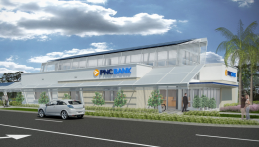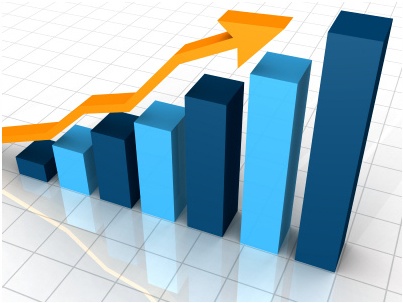KSV focuses both on Smart Energy and the financial industry, so I was intrigued when I learned yesterday that PNC Bank, the gigantic financial institution with more than 2,900 branches, announced that it would build its first net-zero bank branch. Net-zero means that the building is expected to produce more energy than it uses. According to the plan, the new building will have LEED (Leadership in Energy and Environmental Design) Platinum certification and use 50% less energy than typical branch buildings.
 PNC is no stranger to energy efficiency. The company claims to have "more newly constructed LEED-certified buildings (118) than any company on Earth." Even though this is just another step in the right direction for PNC, the details of the proposed new branch are nonetheless impressive. Among other innovative features, the building will incorporate 211 solar panels, solar shading, daylight harvesting, and high-efficiency LED lights and ENERGY STAR appliances.
PNC is no stranger to energy efficiency. The company claims to have "more newly constructed LEED-certified buildings (118) than any company on Earth." Even though this is just another step in the right direction for PNC, the details of the proposed new branch are nonetheless impressive. Among other innovative features, the building will incorporate 211 solar panels, solar shading, daylight harvesting, and high-efficiency LED lights and ENERGY STAR appliances.
This is a fantastic effort by a large company to lower the impact of its operations, but aside from inspiring customers and employees with environmental commitment, what else can financial institutions do to promote energy efficiency?
How about financing it?
There has been a lot of talk on the national stage about "investing in clean energy." This is certainly happening -- earlier this year Wells Fargo and Goldman Sachs each pledged tens of millions of dollars to fund environmental-themed projects -- but it's easy to think only about vast fields of solar arrays and wind turbines. What about the average American homeowner?
 One of the largest opportunities for America to reduce its carbon footprint is by leveraging energy efficiency. Yet, upfront cost remains a gigantic barrier to adoption of home and small-business energy efficiency. Unfortunately, it often takes several, or many years before energy efficiency improvements provide return on the investment. For many families, particularly in this economy, that initial investment is out of reach. Thankfully, banks and other financial institutions have begun addressing this need.
One of the largest opportunities for America to reduce its carbon footprint is by leveraging energy efficiency. Yet, upfront cost remains a gigantic barrier to adoption of home and small-business energy efficiency. Unfortunately, it often takes several, or many years before energy efficiency improvements provide return on the investment. For many families, particularly in this economy, that initial investment is out of reach. Thankfully, banks and other financial institutions have begun addressing this need.
In 2011, Bank of America set aside $55 million for low-cost loans and grants for community development financial institutions to finance efficiency retrofits. Other banks have made similar commitments. PNC touts its "green lending," which provides small businesses with a preferred rate for energy and water efficiency project loans. Additionally, many banks offer "Energy-Efficient Mortgages," which help consumers finance energy efficiency features on new or existing homes.
When these financing options are combined with existing rebate opportunities and tax incentives, energy efficiency starts to look a lot more attainable. Still, all the options can be overwhelming for home owners. Even with available financing, the barrage of research, details and paperwork required remains a huge barrier to entry for most.
Energy efficiency improvements will pick up in popularity as we succeed in streamlining this process. We can't force consumers to go hunting for solutions to their problems. That's not realistic. Instead, we must present consumers with a neat package. We must do for energy efficiency improvements what Amazon.com has done for shopping -- think one-click purchasing.

From a communications standpoint, we can work to bring together the necessary steps -- help the consumer easily visualize the path to energy efficiency, and make walking that path as simple as possible.
Our client, National Grid, is doing an excellent job of this in its new program EnergyWise. As a key component of the EnergyWise messaging, National Grid is connecting customers with 0% financing offers for qualified energy efficiency improvements like heating systems, air sealing, insulation and more. Not only is the 0% financing offer featured front and center in the advertising, but it's mentioned at every step of the process.
Consumers are going to need a lot of help to move toward energy efficiency. Hopefully, we'll see many more efforts like EnergyWise in the future. Nothing will spur movement like connecting the consumer with the right efficiency options and the financing in the same breath.
